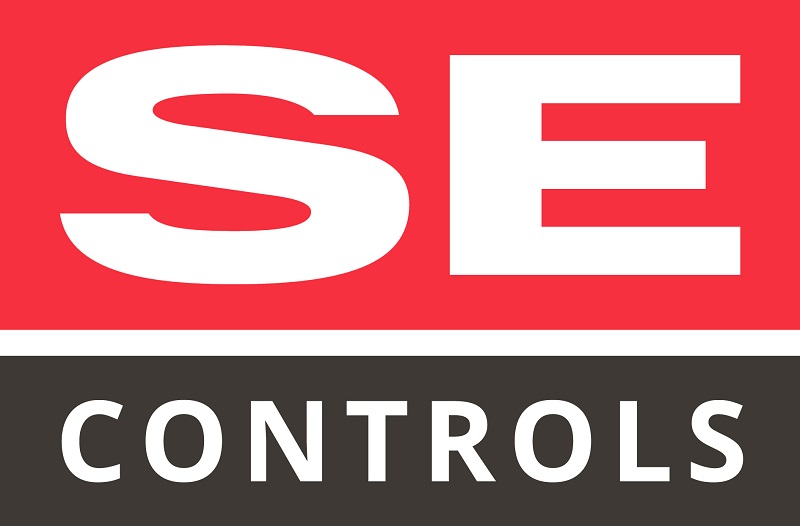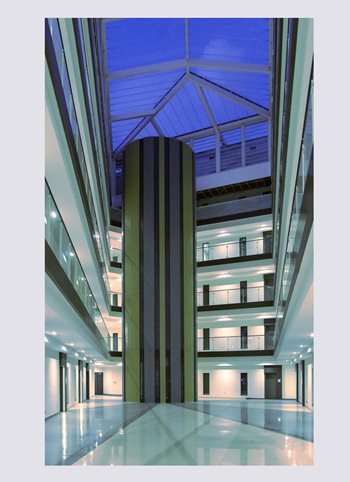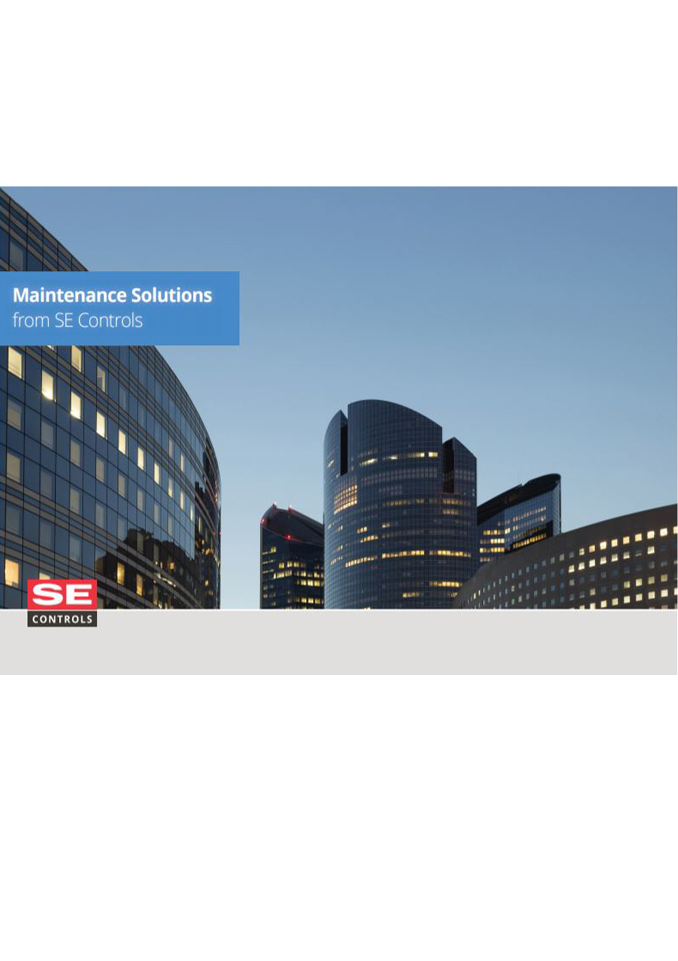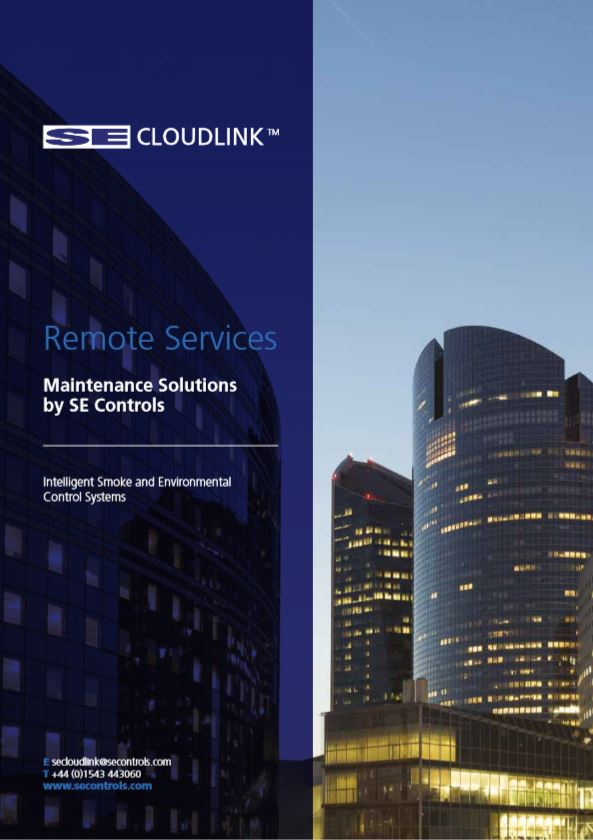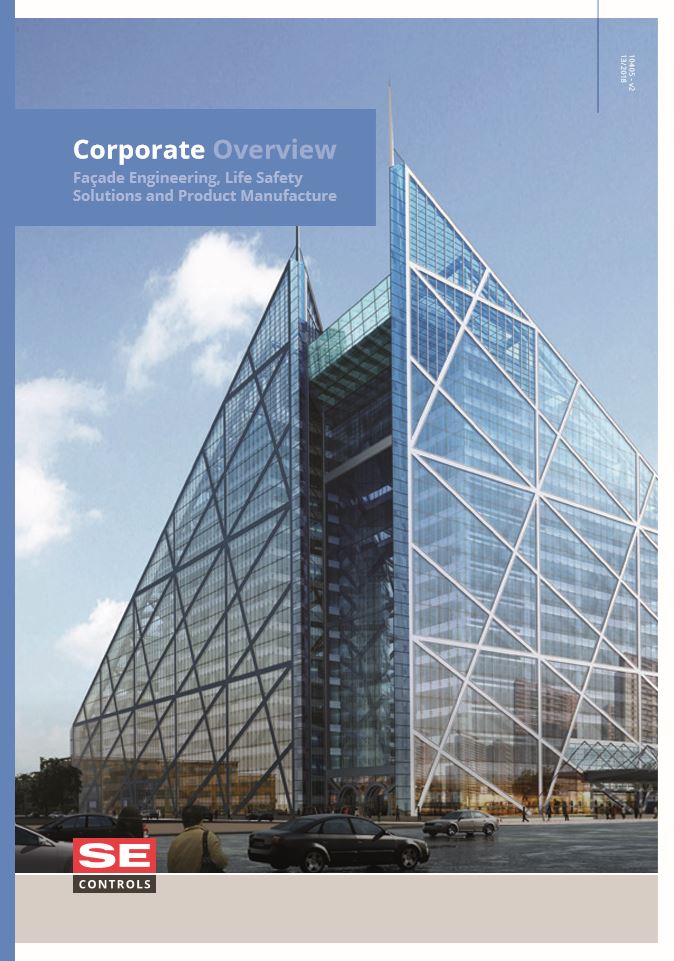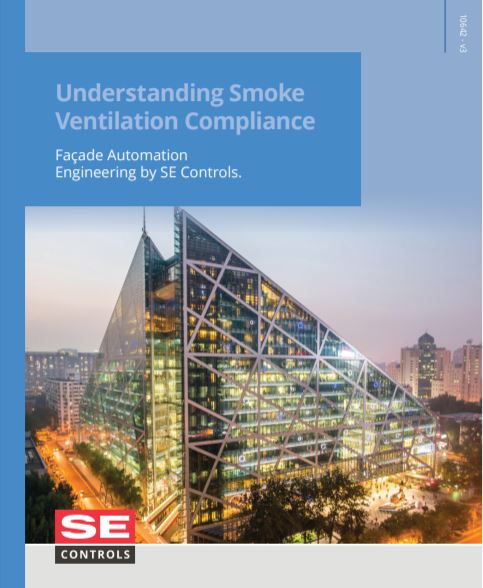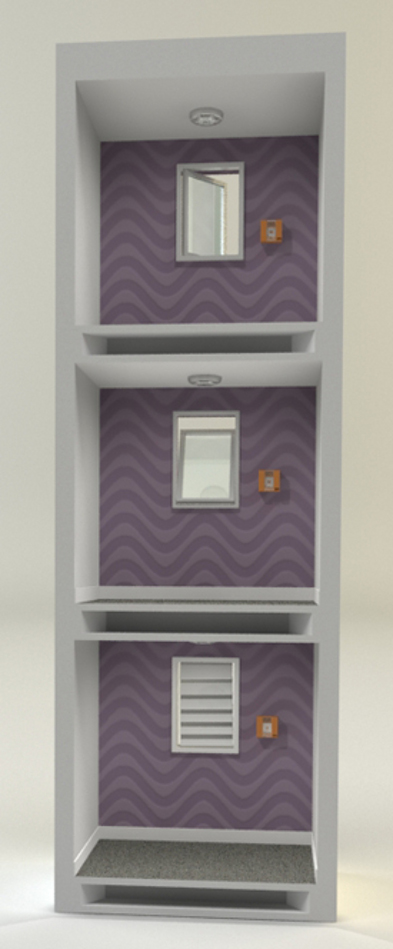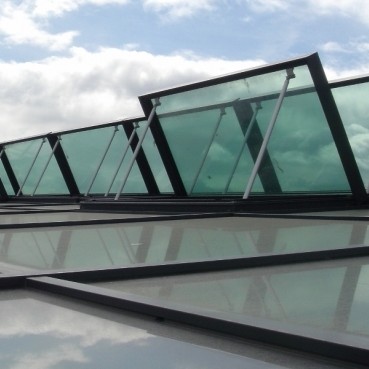
With the publication of the new BS7346 Part 8 standard, the potential for confusion when navigating the various compliance issues surrounding smoke ventilation systems design, installation, commissioning and maintenance is almost completely overcome.
Will Perkins, Group Managing Director of smoke ventilation systems specialist, SE Controls and a key contributor to the new standard, believes it can help save lives and improve industry standards.
“Unsurprisingly, the legislative environment governing the smoke control and fire safety industry is complex, far-reaching and absolutely vital to ensure that systems not only operate faultlessly when they’re needed, but also provide effective safety protection, allowing people to escape a fire,” he said.
“However, while Building Regulations Approved Document B, The Machinery Directive and The Construction Product Regulations, via the various parts of EN12101, provide a relatively tight regulatory framework, until the BS7346-8 Code of Practice, no single document existed that provided guidance for the industry from initial design, through installation to maintenance.
“The over-arching benefit of this new document is that by adhering to its guidelines; designers, installers, commissioning engineers and maintenance teams can create, install and operate a fully compliant smoke control system.
“Throughout BS7346-8, there are some constant themes that are present. Not only does it deal with product quality, location, performance and operation, but also the key questions of assessment of needs together with the certification and verification by authorised bodies.
“Interestingly, the development of the new Code of Practice was stimulated by a number of factors including the need for a consistent standard against which approving bodies could evaluate a system’s performance.
“Developing the standard The Smoke Control Association (SCA), of which SE Controls is a long-standing corporate member and has been present on the British Standards committee for more than 15 years, recognised that there was a need to raise the standards across the industry.
“A key driver in the early stages of the process was evidence suggesting that smoke control systems in residential high-rise developments were of variable quality, an issue created by a number of factors.”
For example, although there are several inter-related product standards governing individual components within smoke control solutions, nothing existed that encompassed the entire system. In addition, while the Regulatory Reform (Fire Safety) Order 2005 (RRO) allows systems to be inspected, verified for performance and even condemned by the fire service, where necessary, this can only be undertaken after the building is complete and is occupied.
“Clearly, there were gaps that required bridging, particularly in managing the quality and consistency of the design and installation process,” he added. “Following an initiative and proposal made by SE Controls to the SCA, the association began the process of creating an installer certification procedure.
“The resulting FIRAS accreditation scheme was created to ensure systems were consistently and safely installed, commissioned and maintained in accordance with the clear design criteria that are required to be set out on each project.
“The development of the FIRAS accreditation scheme brought into sharp focus the urgent need for a common standard against which assessments could be made. This led to the formation of the British Standards 7346-8 working group, comprising key industry stakeholders, including manufacturers, regulators and the Fire and Rescue Service.
Some would say, the standard is perhaps long overdue and for some time there has been a need to harmonise standards across the industry and ensure the systems perform effectively. In reality, as has already been explored, there is a diverse range of regulations and conventions in the UK and Europe that already ensure that the key elements of smoke ventilation systems perform to the highest standards.
“By having a robust installer accreditation scheme, which is now in place, and BS7346-8 as the recognised system implementation standard, there is now no justification for inferior quality installations,” he continued. “Ignorance cannot be an excuse.
“BS7346-8 builds on all of the regulations, procedures and processes that exist and combines them into a unified code or practice that is designed to make the entire procedure of designing, installing and maintaining a compliant smoke control system a much more straightforward task.
“The code exists to ensure compliance and high standards, as well as making things simpler for all those involved. For example, the first chart within the standard is a block process diagram that not only covers the full path from ‘identifying the system requirements’ to the details of ‘frequency of maintenance’, but also includes the key considerations that need to be observed throughout the entire process.
“The scope and detail it contains is comprehensive and every aspect of the system design is covered along with key system design considerations dedicated to particular smoke ventilation products, such as SHEV’s, smoke barriers and smoke shaft systems.
“This same level of detail is carried through the entire document, covering core elements, such as cable selection and routing, while equally importantly providing templates for mandatory documents, such as commissioning, acceptance and inspection and servicing certificates.”
Ultimately, the new standard deals with two essential elements of smoke ventilation and control systems – ‘Cause & Effect’ and ‘Responsibility’, both of which are key principles of effective system design, operation and safety, but for differing reasons.
System cause & effect schedules define the system architecture and operation. For a specific input or event, then there will be a corresponding response from the system, whether it’s a manually controlled test process or an automatic trigger in the event of a fire.
In both cases, the system must perform correctly and respond appropriately to maintain safety. Consulting engineers, architects, design teams and installers will already be familiar with the principles of cause & effect, but BS7346-8 makes it a discrete but inherent part of the overall system process to ensure failsafe operation and system integrity.
With complex life safety critical systems, such as smoke ventilation and smoke control, ‘Responsibility’ is an integral feature that must be observed, implemented and enforced. Through the standard, the responsibility and acceptance of responsibility for key procedures, phases and elements of the system are built in to ensure compliance and adherence to the relevant regulations. It demands that performance documentation for every phase of the work should be fully recorded by the person or organisation taking responsibility for the stage. This has the effect of verifying performance, standard of design, installation and maintenance at each phase and acting as a quality or ‘due diligence’ procedure as an integral system feature.
Although various contractual arrangements are possible, the overall responsibility for checking that the performance of the system matches the design requirements should be assumed by one organisation that is ‘competent’. In this instance, competence can be typically demonstrated through accreditation under a third party scheme, such as FIRAS.
“There are no down sides to BS7346-8, only positives,” said Will Perkins. “Within this single document that is barely 50 pages long, the entire smoke ventilation and control systems industry has ‘come of age’ in terms of its integrity, performance, quality and compliance.
“Admittedly, the industry already had excellent standards, but BS7346-8 has made it clear what needs to be achieved, how it can be done and what procedures have to be observed, without fail.
“Overall, perhaps its most significant contribution is that it will help save even more lives, as the quality of smoke ventilation design will be even more consistent and will promote even higher standards throughout the industry, which is essential to maintain and enhance the professionalism that the SCA, SE Controls and other similar organisation have worked so tirelessly to achieve.”







